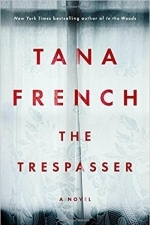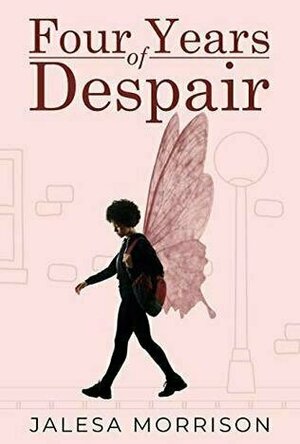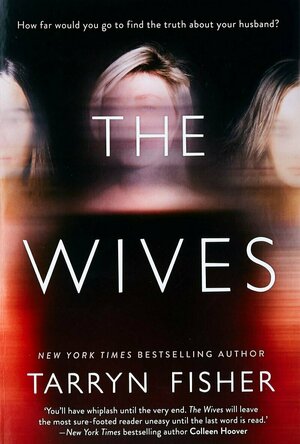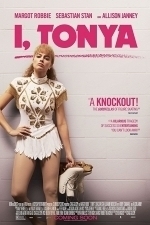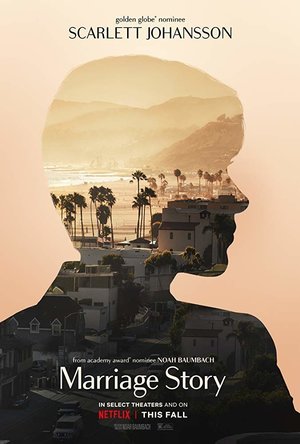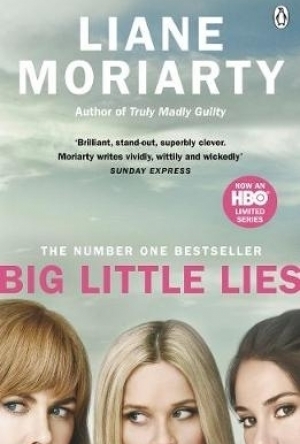
Boarding Pass Flight Check In
Travel and Navigation
App
Are you a frequent flyer? Tired of searching for itineraries in your emails and of having the...

Fongo - talk and text freely
Social Networking and Utilities
App
•• Fongo is the only calling + texting app that is truly UNLIMITED. •• •• Save hundreds...

touchAble Mini
Music and Productivity
App
touchAble is THE controller app for Ableton Live. Countless artists around the globe - from bedroom...

Paytm - Payments & Wallet
Shopping and Lifestyle
App
#PaytmKaro for the fastest recharge, bill payment & shopping experience. Quick, easy and secure,...
Kristy H (1252 KP) rated The Trespasser: Dublin Murder Squad in Books
Feb 1, 2018
I'll say it up front: this was an excellent mystery. Just a wonderful read. I love all of French's novels, but thoroughly enjoyed this one. Antoinette was a refreshing voice and completely relatable. Her case was interesting and well-plotted, leaving you constantly guessing. As per a typical French novel, you don't receive just a simple mystery; each of her books comes with a backstory. In this one, we see Antoinette battling her demons and her inability to fit in with her Squad. Are they really out to get her, or is it all in her head? It's true that French's books probably aren't for everyone. There's a lot of talking, a lot of expounding, and a lot of knowing what her characters are thinking. But, in turn, you're presented with characters who are so complex, so rich and in-depth. It's amazing. I've said it in previous reviews, but I love that when I open one of French's novels, I know that I'll be completely transported into another world for a few days. Her writing is strong that you completely inhabit her characters and their environment.
Antoinette, as mentioned, is a complex female character -- strong yet vulnerable and just completely refreshing to find in a detective novel. Her relationship with Moran was very enjoyable to read about, especially after hearing about their initial early meeting in [b:The Secret Place|20821043|The Secret Place (Dublin Murder Squad, #5)|Tana French|https://images.gr-assets.com/books/1396671263s/20821043.jpg|21598636] from Moran's point of view. There's a humor to Conway, lending levity when needed, but also a dark side. She's bitter with the world for a reason. Because the entire book is told from her perspective, we're figuring out the mystery with her, learning facts and alibis as she does, and unraveling the plot along with our detective. Of course, we're limited to seeing the case from her perspective, too. As Moran and Conway try to determine who they can trust, so do we. The book expertly leaves you guessing with the plot; it takes you in one direction early in an incredibly convincing matter. It also skillfully takes you inside the Squad, allowing us to see not only how a case is run, but the inner politics.
In this way, the novel is not just a well-crafted mystery but a lovely treatise on relationships and friendships and the lengths we go for both. I'm also left amazed at how much French can put into a novel. Her way with words is magical, and I just love her books, her stories, and her characters. I highly recommend this novel, or any of her earlier work. 4.5 stars.
Night Reader Reviews (683 KP) rated Four Years of Despair in Books
Jan 9, 2020
content.
Four Years of Despair by Jalesa Morrison was a shocker to say the least. It is hard to find the words to accurately describe this book and do it justice. Normally I would complain about the repetitiveness of a book. In this case the repetition accurately portrays the events in the book. I can easily see this being extended into a larger novel if Jalesa Morrison feels confident enough in her ability to stay accurate and go deeper into each character. Parts of this book did make me cringe multiple times. At first I did not like this book at all but then I figured it out. This book is not meant to be liked. It is meant to infom, to show what sever meutal illuess laaks like behind closed doors. It shows what the individual and family members go through on a daily basis that most people do not see or understand.
Jalesa tells the story of thirteen year old Jaunell Morris, her sis ters Lois and Francis, and their mother Joan. Jaunell was your typical preteen up until around her thirteenth birthday. It was then that
Jaunell was diagnosed with a bipolar disorder that also causes her to become extremely depressed. Joan freqiently struggles to get Jaunell to take a shower or even go to school. This also makes it difficult for Joan to hold a job and she has to ask her own mother (Jamell's grandmother) for financial assistance.
Jaunell lashes out and physically attacks her family members miltiple times.
Between Jaunell's lack of bodily cleanliness and her physical outbursts, Joan's friends turn their back on Joan and many of their family members disown Jaunell. Joan's mother blames Joan for Jaunell's behavior and tells her that she is a bad mother. Jaunell's father leaves Joan because he can not handle Jaunell. Lois and Francis also turn their backs on their sister after being hurt by her multiple times. These are only a few of the relationships that are destroyed because of a lack of understanding. Joan becomes depressed as well and ends up abusing Jaunell because she believes everything to be Jaunell's fault even though she knows in her heart that it is not true. Jaunell spends four years in and out of hospitals countless times before her mother has the financial ability to send Jaunell to a long term care facility. But there is hope...
What I liked best was Jalesa's blunt honesty about what is going on. Jalesa tells the story of Jaunell and her family without the fear of offending anyone. Jaunell's story is one that needed to be told. What I liked least was the lack of depth to the characters. In fact, I found it to be mildly disappointing. Also, there were times where I did not agree with what was happening, but that is nothing against the book. That was my personal rejection of admitting that there are people suffering like this every day.
Target readers for this book were hard to determine because of the nature of the topic. It truly depends on the individual's mindset. I believe high school students and older could handle this book. At the same time, the message would be good for middle school students as well but might be hard for them to read. This book got a sold 3 out of 4 rating from me. The only reason it did not get a perfect rating was that I would like to see more depth.
https://www.facebook.com/nightreaderreviews
Ivana A. | Diary of Difference (1171 KP) rated The Wives in Books
Oct 5, 2020
Synopsis:
Thursday is married to Seth. But he has two other wives, that he sees during the week. Thursday gets to see Seth on Thursday, while the other wives each have a day for themselves as well. The main rule is - she is not supposed to know the other wives, nor contact them.
When Thursday finds the name of his newest wife, Hannah, in Seth’s pocket, she does what every woman would - looks her up. She meets up with Hannah under a false name, trying to find out more about her and the husband that they share. But Hannah is not only pregnant with Seth’s baby; she also has bruises on her body. Is Seth capable of that? The Seth she is married to?
Realising she might not know who Seth really is, Thursday is on a mission to find out as much as possible about him and the other two wives, before he realises something’s up. With many twists and turns, Thursday realises things are not as they seem. At all.
My Thoughts:
The first half of the book gives us the idea of the situation. From Thursday’s point of view, we get a glimpse of a very rare situation. How a woman feels when she is sharing a man with other women. The challenges and worries this entails. The constant battle to be better than the others, even though she doesn’t know them. The constant curiosity to know how they treat him, whether they are more beautiful than her, whether they can give him more than she can. The battle with herself, on why isn’t she enough. Why does he need other women to be happy? The loss of her baby, that changed everything.
The second half of the book is filled with plot twists, and I cannot say much more without revealing anything. It involves finding out the truth, violence, mental health hospital and many lies told by many people. I was very disappointed with the ending, and I will have to explain why below.
SPOILER ALERT - The below paragraph contains spoilers.
During the book, we kept having more and more plot twists. The story started becoming more and more twisted and tricky to unravel. And then, a few chapters before the end, the author explains this as one of Thursday’s delusions. Seth divorced her when they lost the baby, but she could never move on and started believing this delusion that he has multiple wives. However, there are many inconsistencies to this, and they are all left for us to believe they are part of Thursday’s delusions. Also, there are facts that don’t correspond. He still came to see her every Thursday (which was explained as cheating). Furthermore. he stole money from her bank account. He brewed some weird tea for her before she lost her baby. Somehow, I keep thinking that the plot became too twisted for the author as well, and she just decided to blame it all on Thursday’s delusions.
SPOILER FINISHED.
I am still unsure on how I feel about this book. Perhaps I would’ve been more satisfied if the explanation and the ending were different. The very last scene was shocking, and completely out of character. I cannot understand why this is how the book ended and I am very conflicted. This type of plot seems very similar to other books I have read before, and I don’t find it unique. However, I read this book in a day and it did intrigue me to find out more. Once you start reading, you cannot put this book down. But once you get to the ending, there is the conflict of whether it was a good ending of such a twisty book.
I definitely recommend it, if you love this genre. It will keep you on your toes. It also might make you think whether your husband has other wives as well. Just kidding :)
BLOG TOUR
This review is part of the blog tour for The Wives, organised by the HQ Team. Thank you to the publisher and the author, for sending me a copy of this book in exchange for an honest review.
Bob Mann (459 KP) rated I, Tonya (2017) in Movies
Sep 29, 2021
“I, Tonya” is cleverly filmed as a pseudo-documentary, featuring re-enactments of the real-life interviews of most of the participants in this true-life drama. I recently bitterly criticised some film critics for spoiling the story of Donald Crowhurst, the subject of the recent “The Mercy”. But I was about to do exactly the same here, *assuming* that you all know the lurid tale of the rivalry between Tonya Harding and Nancy Kerrigan that led up to an ‘event’ in 1994 that shocked the world. And of course, many of you younger folk don’t know: case in point my 26 year old son who I went to see this with, and who went into the story blissfully blind of the drama about to unfold. So I will try to keep this review spoiler-free.
Playing Tonya from a (not very credible!) 15 years old to her mid-20’s is Margot Robbie (“The Wolf of Wall Street”, “Suicide Squad”) in what is a BAFTA and Oscar nominated performance. And for good reason: the performance is raw, visceral and disturbing in reflecting a victim who still thinks everything at heart is her own fault.
Also BAFTA and Oscar nominated is Allison Janney (“The Girl on the Train”) as Tonya’s obnoxious chain-smoking mother LaVona. Janney is truly terrifying as the mother who abuses her daughter both physically and mentally in a driven attempt to make her the best ice-skater in the world.
Victims seem to attract abusers, and Tonya is surrounded by people who are just plain bad for her: notably her husband Jeff (Sebastian Stan, “The Martian”, “Captain America: Winter Soldier”) and his slimy and pitifully self-deluded friend Shawn (Paul Walter Hauser). The end credits video footage of the real-life players show just how well these parts were cast.
Why so uncomfortable to watch? There is a significant degree of domestic abuse featured in the film, both in terms of LaVona on her child and Jeff on his wife. This is something I abhor in general, having been brought up to believe it is never EVER acceptable to lay a hand on a woman. To have these cowardly individuals sensationalised in the movie I found to be really upsetting. I strongly feel, for this reason alone, that the film should have had an 18 certificate. Violence in film should be related to the context as well as the severity. (Note that this is in stark contrast to my comments of recent BBFC decisions to make “Phantom Thread” and “Lady Bird” 15-certificates when I believe they should have been 12A).
The film is executed extremely well, with 4:3 framing for the staged interviews, and ice skating scenes that seamlessly cut between the professional clearly doing the stunts and Robbie (who must also be a half decent skater too). The soundtrack is nicely littered – “Guardians of the Galaxy” style – with classic hits of the early 90’s.
To think that this story actually unfolded in this way is nothing short of astounding… but it did! There is an astonishing video clip here (#spoilers) of the run up to, and the immediate aftermath of, the Kerrigan incident. I came out of the film with a deep feeling of sadness for Harding (at least, as portrayed) and utter disgust that the villains of this piece could be a) so cruel and out of control and b) so utterly stupid. These are individuals who really should have been sterilised to stop them polluting the gene pool any further.
Written by Steven Rogers (“Stepmom”) and directed by Australian Craig Gillespie, there is no doubting that this is a powerful film: played to an absolutely silent and gripped Saturday night cinema audience. And it has truly dynamite performances from Allison Janney and Margot Robbie. But be warned that you’ll need a strong stomach to go and see it without being affected by it afterwards. It’s a mental keeper.
BankofMarquis (1832 KP) rated Marriage Story (2019) in Movies
Jan 19, 2020
So, naturally, Baumbach (THE SQUID AND THE WHALE) was able to draw 2 of the better performers working in film today to play the leads - Scarlett Johannson and Adam Driver - and they deliver the goods (along with Laura Dern) - all 3 were deserved Oscar nominees - and the performances of ALL of the actors on screen are worth watching.
But...that's about all this film has going for it. For I found the first hour and a half of this film tedious with (at times) preposterous dialogue that looked good on paper - and was enthusiastically performed - but wrang (at least to me) as unrealistic. Consequently, this film is filled with well acted scenes that I kept saying to myself - "that was a well acted scene and that was an interesting choice that that actor made in that scene", but I found that these disparate scenes in this part of the film did not hold together as a movie. It seemed to me a series of acting class scenes and not a film.
And, for that, I blame Writer/Director Baumbach. This film, purportedly, parallels his divorce from actress Jennifer Jason Leigh (HATEFUL 8) and it shows. It's a little too "on the nose" and "inside baseball" for my tastes. The dialogue, at times, was "too cute" and the pacing was deliberate - which is a nice way of saying "slow".
What saves this film is the performances. Johannson dominates the first part of this film and she brings her "A" game, bringing a strength and awakening purpose to her character that will have you rooting for her - at the beginning. The first half of the film (for the most part) is Johannson's film and is what gives her her Oscar nomination (she won't win), but she deserves the nomination.
Laura Dern is also Oscar nominated for her role as Johannson's Divorce Attorney. Bright, funny, articulate and a shark in the courtroom and boardroom, Dern's character was fascinating to watch onscreen. While I thought this performance was "fine" and I was "okay" with it getting an Oscar nomination, I kept waiting for the "Oscar scene" for this supporting character - and about 2/3 of the way into the film this character had that moment - and Dern killed it. I would now say Dern is the deserved frontrunner for Best Supporting Actress (ironically, over Johansson who is ALSO nominated for Supporting Actress for JoJo Rabbit).
This scene propels the last 1/3 of this film into interesting territory - a place that this film had not gone to thus far. I was sucked into this last part and I think it is in no small reason due to the fact that this part of the film is driven (no pun intended) by Adam Driver's character. I've always found Driver to be a fascinating actor and while his character was not front and center much in the first part of the film, he commands center stage in the last part and I could not take my eyes off of his powerful performance. In a strong year of Best Acting performances, he shines and I would be happily surprised and satisfied if he won the Best Actor Oscar.
Alan Alda, as usual, brings an interesting character to the screen as does Julie Hagerty (remember her from AIRPLANE?) as Scarlett's mother. The surprise to me was the strong play of Ray Liotta as one of Driver's lawyers - it is his best work in quite some time and shows he does have some acting chops. Finally, good ol' Wallace Shawn (the "inconceivable" Count Visini in PRINCESS BRIDE) was fun - and annoying - in his scenes.
So...if you want to see some good acting in scenes that I am sure will end up as good scenes in an acting class performed very strongly, then check out MARRIAGE STORY. Just make sure you are well rested. A fast-paced romp it is not.
Letter Grade: B (for the strong performances)
7 stars (out of 10) and you can take that to the Bank(ofMarquis)
Heather Cranmer (2721 KP) rated Big Little Lies in Books
Mar 22, 2020
Many things are happening for the parents of the children that attend Pirriwee Public school. Madeline is happy go lucky, but she isn't afraid to speak her mind. Celeste is gorgeous and seems to have the perfect life, but it's what goes on behind closed doors that make her want to run away from it all. Jane, a single mom, is younger than most of the parents and has just moved to the area. With her, she brings a very big secret. As their lives intersect, things come to a head leaving one person dead. The thing is, was it murder, self defense, suicide, or just an unfortunate accident?
The plot for Big Little Lies is easy to navigate and understand. It was easy to imagine myself as a bystander in the book whilst all the action was going on around me. Most of the characters in this book lead a privileged life, so it was nice to get a sneak peek into their lives and see that they have problems as well. The pacing was done beautifully. The chapters weren't very long, so I kept telling myself one more chapter which we all know turns into many more chapters! The prose was fantastic and flowed perfectly. I kept wanting to know more and would try to guess who the character was that died. I enjoyed the dialogue that would start off most chapters where a character was talking to someone regarding the death of a character in present day. I did predict which character would end up dead though, but I suppose that was a lucky guess. There was one big plot twist I didn't see coming, and I loved that plot twist! The book ends with no cliff hangers, and all of my questions were answered.
I enjoyed every character in Big Little Lies. Each and every character was well developed and interesting to learn about. Although the story follows Madeline, Celeste, and Jane, other characters are fleshed out through their narratives. I loved how Madeline wasn't afraid to tell it like it was. She just could not hold anything back, yet people still wanted to be her friend. Her loyalty to her friends was admirable, and I would love a friend like her! Her husband, Ed, was very supportive to Madeline, and it was easy to see that he loved her. Her oldest daughter, Abigail, was an interesting one. I liked reading about her and seeing how she would turn out throughout everything. (The virginity thing sure was interesting, and I would have done exactly as Madeline!) Madeline's youngest daughter Chloe was cute. She reminded me so much of a younger Madeline. Nathan, Madeline's ex-husband, and his wife Bonnie were other characters that helped flesh out Madeline. I did like Bonnie's carefree personality though. I also loved reading about Celeste, and I felt bad for her many times with what she had to endure. Sure, to others, she had it all - looks, a huge house, a very rich and good looking husband who seemed to adore her, beautiful twin boys - but her pain was obvious throughout, and I could understand her hesitation to do the right thing. Getting to read about her thought process was interesting. Perry, Celeste's husband, came across as very charismatic. It was easy to see why everyone loved him so much. I wanted good things to happen for Jane and her little boy, Ziggy. Jane's love for Ziggy oozed from the pages. The love she had for Ziggy was so sweet. Ziggy seemed like such a cute little boy, and I just wanted to hug him and never let go especially after what happens very early on in the book.
Trigger warnings for Big Little Lies include death, drinking, drunkenness, profanity, domestic violence, violence, and sexual situations (although not graphic).
All in all, Big Little Lies is a delicious morsel of a book. It delves right into the lives of its characters who come to feel like close friends and family by the end of the book. I would definitely recommend Big Little Lies by Liane Moriarty to everyone aged 16+ who are in dire need of a fantastic read with a great cast of characters and a plot that sucks you right in!
